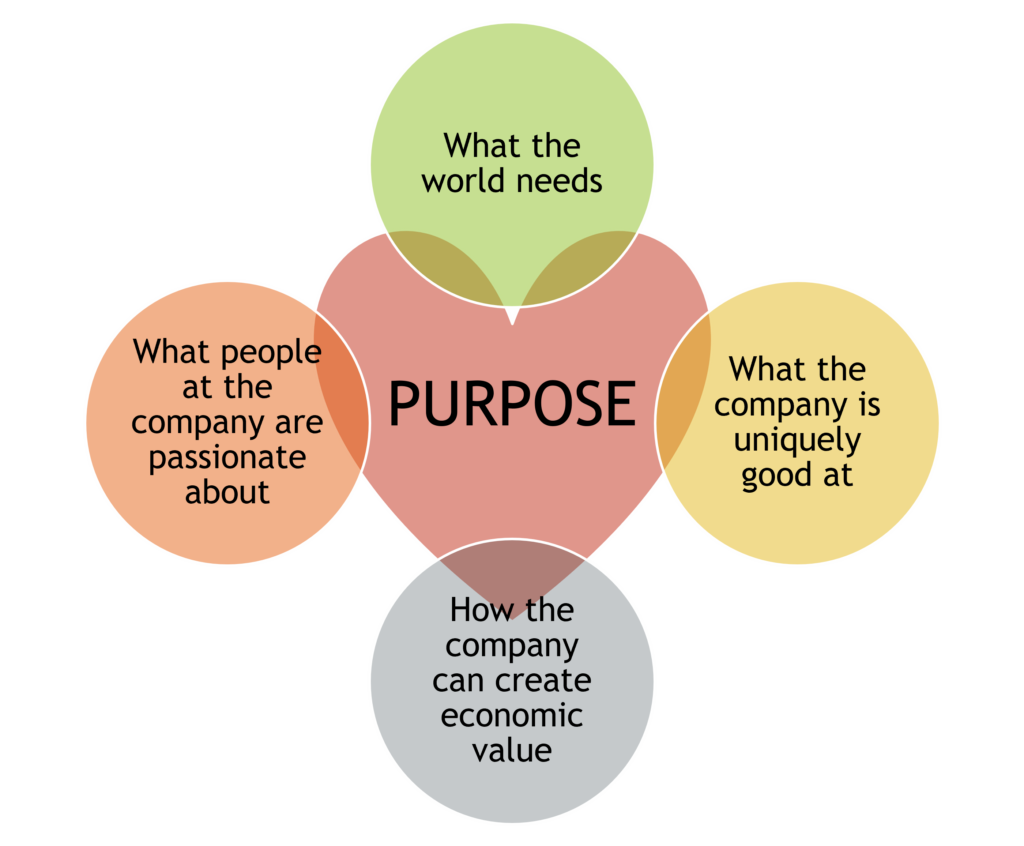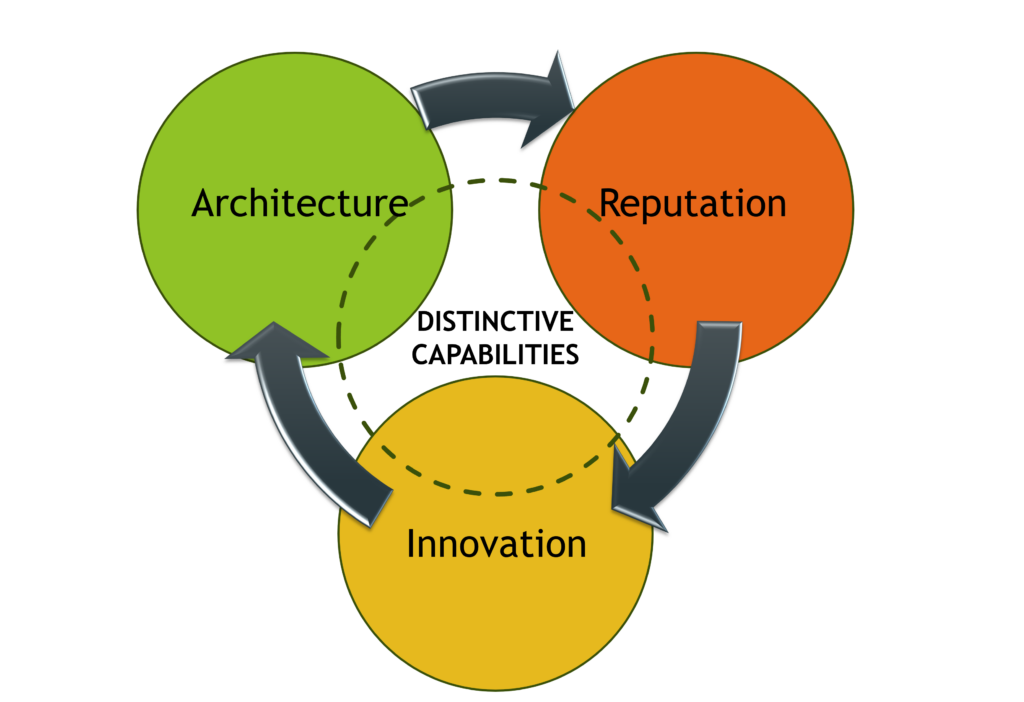In today’s dynamic business landscape, organizations are increasingly recognizing the importance of defining a clear purpose beyond profit-making. However, achieving alignment between this overarching purpose and the distinct capabilities of a business is often overlooked but crucial for sustainable success.
In this article, the purpose of a business and distinct capabilities are presented as interconnected strategic elements that, when aligned, drive sustainable success and societal impact. Through case studies and strategic insights, the article highlights the importance of recognizing and leveraging this alignment for competitive advantage and long-term value creation.
Introduction: In today’s dynamic business landscape, organizations are increasingly recognizing the importance of defining a clear purpose beyond profit-making. However, achieving alignment between this overarching purpose and the distinct capabilities of a business is often overlooked but crucial for sustainable success.
Understanding the Purpose of a Business:
The purpose of a business goes beyond generating revenue; it encapsulates the core reason for its existence and its contribution to society. Whether it’s fostering innovation, addressing societal challenges, or delivering exceptional customer experiences, a well-defined purpose serves as the guiding principle that shapes a company’s strategy and operations.

Exploring Distinct Capabilities:
Distinct capabilities refer to the unique strengths, resources, and competencies that set a business apart from its competitors. These can include technological expertise, brand reputation, supply chain efficiency, or a talented workforce. Identifying and leveraging these capabilities are essential for creating competitive advantage and driving sustainable growth.

The Intersection of Purpose and Distinct Capabilities:
When the purpose of a business aligns seamlessly with its distinct capabilities, magic happens. Purpose provides the overarching direction, guiding how resources are allocated and decisions are made. Meanwhile, distinct capabilities serve as the engine that propels the organization toward its purpose, enabling it to deliver value in a way that competitors cannot replicate.

The following section will present case studies.
Case: Carlsberg – carlsberggroup.com
Carlsberg’s purpose is to “brew for a better today and tomorrow.” This purpose reflects the company’s commitment to sustainability, responsible drinking, and creating positive social and environmental impact. Carlsberg aims to brew high-quality beer while minimizing its environmental footprint, promoting responsible consumption, and contributing to the well-being of communities where it operates.
The company’s purpose guides its business decisions and initiatives, shaping its approach to sustainability, innovation, and corporate social responsibility. Overall, Carlsberg’s purpose emphasizes its dedication to making a positive difference in the world, both now and in the future.
Carlsberg, the Danish multinational brewing company, has aligned its purpose with a focus on sustainability and responsible consumption of alcohol. Here are some key ways in which Carlsberg has aligned its purpose:
- Sustainable Brewing Practices: Carlsberg has made significant commitments to sustainability in its brewing practices. The company aims to achieve zero carbon emissions and zero water waste at its breweries, as well as sourcing 100% of its electricity from renewable sources. By prioritizing sustainability, Carlsberg demonstrates its commitment to reducing its environmental impact and contributing to global efforts to combat climate change.
- Circular Packaging Solutions: Carlsberg has implemented initiatives to reduce plastic waste and promote circular packaging solutions. For example, the company has developed the “Snap Pack,” which replaces traditional plastic rings with glue to hold cans together, reducing plastic usage. Carlsberg also aims to achieve zero waste to landfill across its supply chain by 2030, further demonstrating its commitment to sustainability.
- Responsible Drinking Campaigns: Carlsberg has launched responsible drinking campaigns aimed at promoting moderation and reducing harmful drinking behaviors. These campaigns include initiatives such as “Drink Responsibly” messaging on packaging and advertisements, as well as partnerships with organizations focused on alcohol education and harm reduction.
- Community Engagement: Carlsberg actively engages with local communities and stakeholders to address social and environmental issues. The company supports community development projects, promotes responsible business practices, and collaborates with NGOs and government agencies to address shared challenges. By fostering partnerships and dialogue, Carlsberg demonstrates its commitment to being a responsible corporate citizen.
- Transparency and Accountability: Carlsberg prioritizes transparency and accountability in its sustainability efforts. The company publishes annual sustainability reports detailing its progress toward environmental and social goals, as well as initiatives to engage with stakeholders and address emerging issues. By being transparent about its challenges and progress, Carlsberg builds trust with consumers and stakeholders.
Overall, Carlsberg has aligned its purpose with a focus on sustainability, responsible consumption, and community engagement. By integrating these principles into its business strategy and operations, Carlsberg demonstrates its commitment to creating value for society while driving long-term business success.
Case: Toms Shoes – toms.com
TOMS Shoes’ purpose is rooted in its commitment to creating a better tomorrow through its “One for One” business model. Founded in 2006 by Blake Mycoskie, TOMS’ purpose is to improve lives by providing shoes, sight, water, safe birth, and bullying prevention services to people in need around the world.
The core of TOMS’ purpose is encapsulated in its mission to match every purchase with a donation of a pair of shoes to a child in need. This “One for One” model has since expanded to include other products and services:
- Shoes: For every pair of shoes purchased, TOMS donates a pair of shoes to a child in need. This initiative aims to protect children from diseases and injuries caused by walking barefoot.
- Sight: TOMS Eyewear purchases support sight-saving surgery, prescription glasses, or medical treatment for individuals in need of eye care.
- Water: TOMS Roasting Co. purchases support clean water initiatives in coffee-producing countries, providing safe drinking water to communities in need.
- Safe Birth: With every purchase of TOMS Bags, the company provides training for skilled birth attendants and vital materials for safe births.
- Bullying Prevention: TOMS’ Stand for Tomorrow collection supports organizations working to end bullying and promote mental health awareness among youth.
TOMS’ purpose is deeply ingrained in its brand identity and business practices, emphasizing the positive social impact of its operations. By integrating giving into its core business model, TOMS has inspired other companies to adopt similar approaches to corporate social responsibility. Overall, TOMS’ purpose is to improve lives and create a more equitable and sustainable future for all.
Challenges and Opportunities: Achieving alignment between purpose and distinct capabilities is not without its challenges. Organizations may face internal resistance, conflicting priorities, or external pressures. However, those that successfully navigate these challenges unlock significant opportunities for differentiation, resilience, and long-term value creation.
Conclusion: In an increasingly interconnected and purpose-driven world, businesses must recognize the symbiotic relationship between their overarching purpose and distinct capabilities. By aligning these two strategic pillars, organizations can not only drive competitive advantage but also make meaningful contributions to society while securing their own long-term success.
Johnsohn.dk – AI-assisted (ChatGPT, Open AI) 2024.04.13






